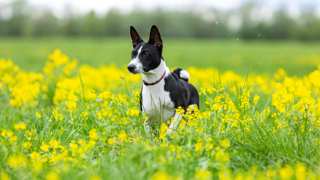Basenji Breed Details
The Basenji is a member of the Hound group of breeds, and has for centuries been used as a multi-purpose hunting and working dog. Though they make decent family pets, their independent, energetic demeanors aren't for everyone. Basenjis are best suited for busy singles, families with older children, or those looking for an active hunting companion.
A few Basenji facts: they're medium sized (height at the shoulders averages 17 inches, and weight 22 pounds), with fine, short-haired coats that are usually bi- or tri-colored. Here are some advantages and drawbacks of owning this athletic breed:
PROS:
- Intelligent
- Affectionate and playful with loved ones
- Extremely low barking tendencies
- Socializes well with other dogs
- Good for apartment living
- Low grooming requirements
- Will tolerate being left alone
- Good watchdog abilities
- Very clean/self-sufficient
CONS:
- Extremely independent and strong-willed
- High prey drive; will chase and possibly injure smaller pets
- Difficult to train
- High exercise requirements
- Early socialization needed with children and other pets
- Excellent escape artists (known to climb chain-link fences)
- High tendency to chew on household objects
- Adapts poorly to colder climates







